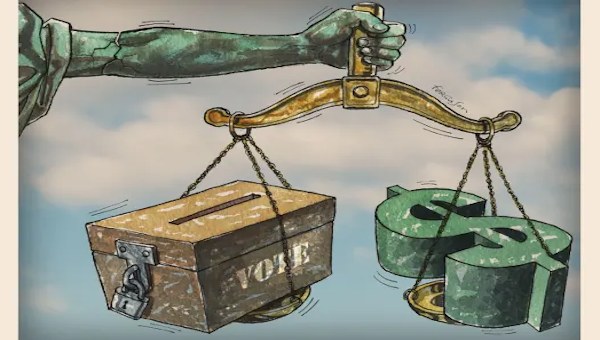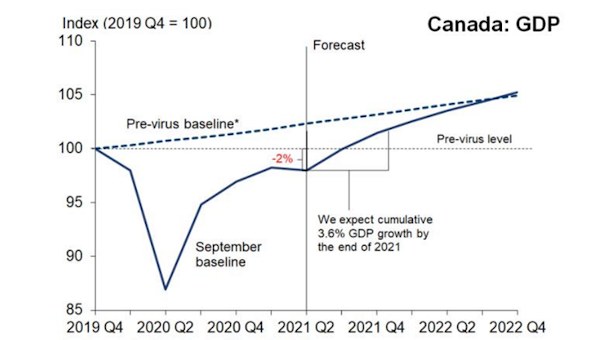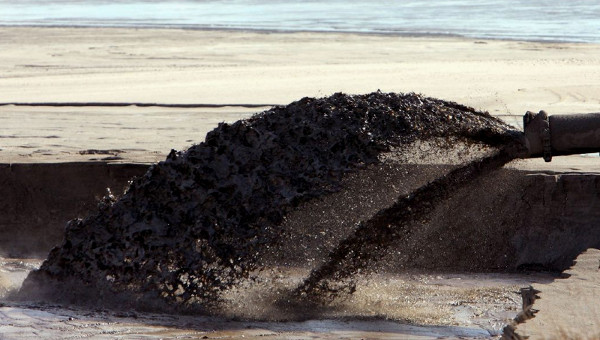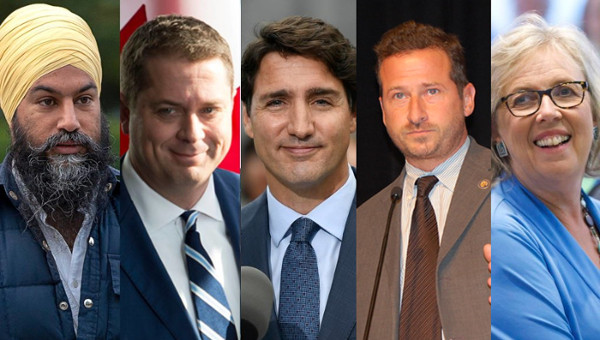Canada’s Elections: What’s the Alternative to the Tories?
Canada’s minority Conservative Party government has called a federal election for October 14. Serious issues confront voters – war in the Middle East and Afghanistan, the economic downturn that that will grow out of the U.S. financial crisis, and climate change that endangers human life on our planet. But four of the five parties in the federal parliament are avoiding serious debate on these issues.
The fifth, the labour-based New Democratic Party (NDP), has a platform that responds to many working class needs, but it is evading vital issues. Only action by trade unions and social justice movements can place working class concerns at the center of the electoral spectacle.
The Liberal Party – lesser evil?
The two leading parties – Conservatives and Liberals – have traded off the governing of Canada since the founding of the country. The Conservatives, who replaced the Liberals in power in 2006, currently take a more right-wing stance. This leads many working people to favour a vote for the Liberals as a lesser evil, but in reality there is much more continuity than difference in the successive governments of these parties.
The Liberals are campaigning aggressively as a “left” alternative to the Conservatives. The party’s supporters have disrupted NDP events, claiming that a vote for the NDP will split the “left” vote and return Conservatives to power.
The country’s largest industrial union, the Canadian Auto Workers (CAW), echoes this position with a call for “strategic voting” – support for NDP candidates in constituencies where the party has a chance of winning, and for Liberals elsewhere. CAW national president Ken Lewenza urges CAW members to “support candidates who have the best chance of defeating a Conservative.”
Many social democratic writers and thinkers, including Murray Dobbin and James Laxer, also favour the Liberals as the lesser evil choice.
A wartime election
Whichever of the two parties heads the next government, it will be a government of war.
A key feature of the Conservative record is its close warmaking alliance with U.S. imperialism in what economist and former oil industry executive John Foster terms “The New Great Game,” the neo-colonial grab for the oil and gas-producing regions of the Middle East and central Asia. Harper sought to deflect attention on the war at the outset of the campaign by announcing that he would stick to Parliament’s vote last March for withdrawal of Canadian combat troops from Kandahar in 2011.
The Liberals, who took Canada to war in Afghanistan in 2005, voted with the government in March. Both parties have massively increased military spending: a new study says that by 2012 the Canadian war in Afghanistan will have cost $22-billion.
The Green Party and the Bloc Québécois criticize the war one day and say it should continue the next.
Only one opposition party, the NDP, says it would end Canada’s war mission in Kandahar. But the NDP has not highlighted the war in its campaign, and it accepts the imperialist rationale behind the war, the idea that wealthy countries are entitled to subjugate countries and peoples by labelling them as rogue or failed states that require protection.
Democratic rights and the social wage
The Conservatives have continued Liberal policies on other fronts. Attacks on democratic rights and on the social and economic conditions of workers, especially the most vulnerable, continue. Canada conducts illegal detentions and participates in torture in the name of the “war on terrorism,” including the now-infamous kidnapping, rendition and torture of Maher Arar in 2002.
Police agencies across the country are engaged in an unprecedented wave of killings and other forms of violence against ordinary citizens. Police budgets doubled between 1997 and 2006, the last year for which statistics are available.
Meanwhile, spending cuts have been the order of the day for everything from social services to funding of arts and culture under successive Conservative and Liberal party governments. 18 people have died as a result of contamination of meat products at the country’s largest processor, Maple Leaf Foods – a direct result of cuts to food safety inspection.
A campaign of denial
The crisis in financial markets and collapse of major U.S. banks has drawn little attention in this election. All parties agree with financial industry claims that Canada will be little affected by the crisis. The NDP’s principal financial proposal in the first weeks of the campaign was for reduced credit card charges.
There is a word for all this – denial. The near-trillion-dollar bailout of some of the largest financial corporations in the world will shift more wealth to the wealthy while providing little protection against further financial crises.
Canadian capitalists have pursued many of the same predatory policies as their U.S. counterparts, and the Canadian economy is now slowing as interest rates rise, credit gets harder to obtain, and capitalists shut down production because of falling profit rates. On September 29, the Toronto Stock Exchange suffered its largest point drop in history. The livelihoods and pensions of millions of Canadians are at risk.
Green Smoke
Climate change is the most hotly contested issue in this election. As a recent Socialist Voice article showed, there are only minor differences between the five major parties. None of them favours the radical cuts in greenhouse gas emissions that scientists are calling for.
None of the parties calls for shutting down the massive tar sands projects in western Canada, the largest single source of greenhouse gas emissions in the country: the parties disagree only on the scale that should be permitted. When NDP candidate Michael Byers declared that the projects should be “shut down,” he quickly drew a rebuke from party leader Jack Layton.
Indigenous rights and sovereignty – another disappeared issue
The more than one million Indigenous people in Canada are waging militant struggles against continued encroachment and pillaging of resources on their territories and to protest the horrendous social conditions that they are forced to endure. None of the parties supports these struggles in a meaningful way.
The Conservatives in office turned their backs on Indigenous peoples. One of their first acts in government was to repudiate the Kelowna Accord under which Indigenous leaders and the previous Liberal government agreed on $5 billion of new spending on social programs and capitalist economic development. And the Tory government made Canada one of only four countries to vote against the United Nations Declaration on the Rights of Indigenous Peoples.
Chief Phil Fontaine of the Assembly of First Nations contrasts poor government spending on Indigenous needs to the vast increases on military spending in recent years. “The response we are looking for from each of the parties is next steps in regards to the eradication of First Nations poverty,” he said, urging Indigenous people to engage more actively in the election campaign.
Quebec’s alternative: the Bloc or the NDP?
In Quebec, the election is a three-way race between the Conservatives, Liberals, and Bloc Québécois. The Conservatives and Liberals oppose Quebec’s right to freely decide if it wishes to form an independent state.
The Conservatives’ aggressive war policy and cuts to arts and culture funding are unpopular, but the party has won support through its skilful manipulation of nationalist feelings. It offers a more friendly form of federalism to Quebec voters than the Liberals.
Liberal support in Quebec have been in decline for years because of the party’s unwavering hostility to the national aspirations of the Quebec people. Liberal leader Stéphane Dion was the author of the hated Clarity Act, under which the federal government claimed the power to override the results of any future referendum on Quebec sovereignty.
The nationalist Bloc Québécois, which holds the largest number of federal seats in Quebec, arose in 1990 out of the ashes of attempts at constitutional reform that would have granted more autonomy to Quebec within the Canadian state. Today, the Bloc is stagnating, unable to form or participate in a federal government and unable to lead Quebec to independence. It is also coming under fire from more conservative nationalists for its relatively progressive social policy.
The NDP hopes to capitalize on the Bloc’s stagnation to make an electoral breakthrough in Quebec. Last year, it won a surprise victory in a by-election in a Montreal riding. But the party has a long history of opposing Quebec’s national aspirations and it ducks issues of Quebec sovereignty. Polls show its support rising above 15 percent, up from 7.5% in 2006.
The NDP campaign
New Democratic Party leader Jack Layton has highlighted three key issues in the NDP’s platform – the economy, protecting the environment, and improving Canada’s mixed public/private health care system. In the 2006 election, the party scored one of its highest results in history, with 17.5 % of the vote. Polls now have it challenging the Liberal Party for second place.
The NDP has built its campaign around a string of popular proposals, including a national daycare program, increased spending on care for seniors, and more public transit. It proposes to pay for these programs by revoking a large tax cut given to corporations earlier this year and by the savings that will come from ending Canada’s combat mission in Afghanistan.
The rise in support for the NDP is a positive development for the labour and social justice movements. Its program is broadly progressive, and its opposition to the war in Afghanistan opens doors to deepen antiwar discussion and mobilization in the labour movement. The election of more NDP members would encourage a spirit of fightback and be a step towards breaking up the Conservative/Liberal duopoly in Ottawa.
That’s why the labour movement should reject the strategic voting option put forward by the CAW and others. The proponents of strategic voting exaggerate the differences between Liberals and Tories, and prevent the working class from using the election to advance its agenda and to strengthen its forces for the post-election period.
At the same time, however, an anti-capitalist program is needed to counter the NDP’s pro-capitalist outlook. Hundreds of thousands of manufacturing jobs have been lost in Canada in the past several years. The numbers will now grow sharply as a result of the financial crisis.
The NDP’s program voices concern about this, but its central proposal is a $2 billion subsidy to large corporations in the name of preserving jobs, including for projects dubbed “green.”
The party avoids policies that would offend Canada’s business elite. A call to nationalize the oil industry and use its profits for social and economic improvements, as Venezuela is doing, could win broad support. Similarly, it could demand the nationalization of companies that threaten to close operations when profit rates decline.
While the NDP’s program calls for an end to Canada’s “combat mission” in Afghanistan, it does not recognize the right of the Afghan people to live free of foreign intervention. It supports a continued foreign military presence there.
Electing the maximum number of NDP members is an important step for the labour movement, but it’s only a beginning. Gains can only be won by stepping up mass pressure and mobilizations.
The NDP has governed in four of Canada’s ten provinces and its record in office has always disappointed its supporters. Its leaders preach reliance on parliamentary procedure to make social and political gains, as opposed to mass mobilization and creation of new institutions of popular power. In power, the NDP has proven to be a loyal defender of capitalist interests.
Labour action
At the May 2008 convention of the Canadian Labour Congress (CLC), an “Action Plan” was submitted by the Executive Council and approved by delegates. It posits the building of “a broad, diverse and inclusive movement for social change,” including support for the NDP and “the political choice of unions in Quebec.” It concludes, “let us commit ourselves to continue to work in solidarity to achieve our goals and build a society that meets the needs of working people and their families.”
In the current campaign, the Congress has issued an election flyer that contains many positive proposals, but omits many of the “Action Plan” proposals and repeats flawed notions from the NDP program. It doesn’t mention the war in Afghanistan, even though the CLC convention voted overwhelmingly to call for withdrawal of Canadian troops. It does not deal with the environmental crisis or the destructive tar sands projects. Its proposals for the economy mirror those of the NDP, calling for tax breaks and subsidies to large corporations.
Needed: A new movement
What’s needed in Canada today is an anti-capitalist and socialist movement. Working people in Canada need a vision for a socialist future that will confront the horrors that the capitalist system is unleashing. We need a movement that champions such a vision, that builds mobilizations in the streets and workplaces to achieve it, and that contests for its program in the electoral arena. A socialist movement that adopted a cooperative but critical attitude toward the NDP – supporting its progressive demands while advancing a program and perspective that can help build the struggles of unions and social movements for fundamental change – would strengthen, not divide and weaken, a resurgent working class.
Such a movement is needed in Canada to help mobilize for serious action on climate change, to end Canada’s participation in the Afghanistan war, and to oppose factory shutdowns and attacks on democratic rights and the social wage.
The labour and social movements should also focus on the parts of the world where working people are building new societies. There is much to learn there, especially in Latin America where an alliance of governments including Cuba, Venezuela and Bolivia, is making important advances towards societies of justice and equality. •





